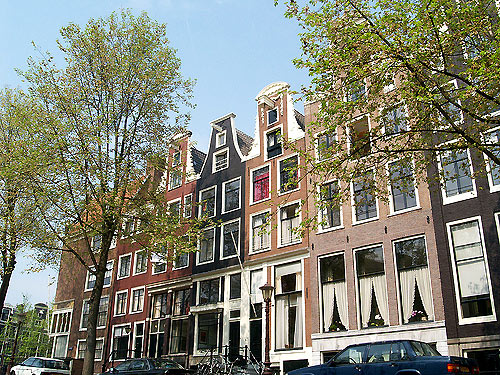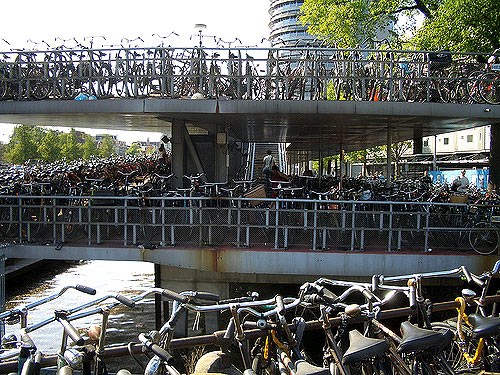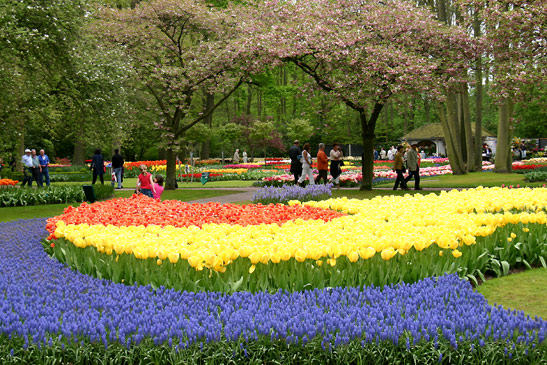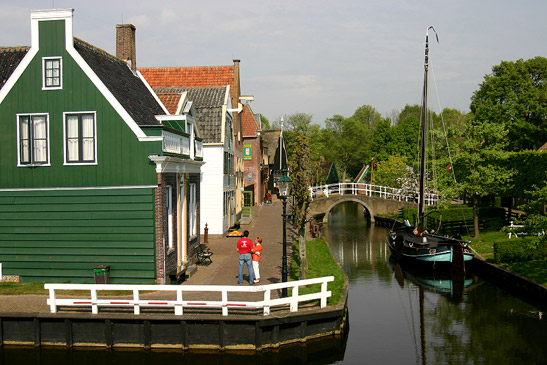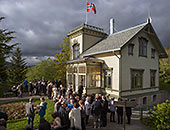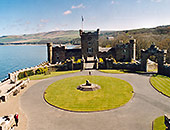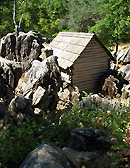 |
 |
|
 |

|
Back Story Located in the Netherlands, Amsterdam began as a small 13th century fishing village on the mouth of the Amstel River. Much of the city is below sea level and would flood if not for a network of dykes. The city rapidly expanded to a major sea trading center, and by the 17th century became the center of a massive world empire. This period, known as the Dutch Golden Age, saw the building of stunning canals and opulent gable homes. Amsterdam was hit hard by military occupations, but rebounded after WW11 and entered the modern age with one of the world's strongest economies.
Say Amsterdam to most Americans and you are met with questions regarding the Red Light District and coffee houses, where the use of cannabis is technically not legal, but openly tolerated. This world does exist, but it is only a small part of the city. Amsterdam has a long tradition of social tolerance. Due to its importance as a merchant center, traders from all over the globe brought not just goods, but other viewpoints and cultures into the city. In the 18th century, when the Dutch Reformed Church was the state religion, Catholicism and Judaism were tolerated. Not so secret Catholic attic churches existed, and Jewish refugees poured into the city. The motto "No one should be harmed by the actions of others" is a defining characteristic of the Amsterdammer. The city today has a large gay and lesbian population, and seemingly reaches out to all outsiders. The untranslatable word gedogen refers to the Dutch practice of turning a blind eye to things which are officially illegal but tolerated, such as soft drugs and euthanasia. Sadly, there are those who are attempting to redefine the word to mean "anything goes.' Since the murder of Dutch filmmaker Theo van Gogh in Amsterdam on Nov. 2, 2004, tension has erupted over radical Muslim immigrants in The Netherlands. The beating of one's wife and practicing a doctrine of hate is the exact opposite of gedogen, and the Dutch politicians and police are taking a hard stance to counter it. Getting Around Amsterdam is a compact city of 750,000, easily negotiated by foot or tram. The train station and Dam Square are at the heart of the city and the starting point for most tours. Museum Square ...is a brief tram ride from the city center. It is home to the RIJKSMUSEUM, which includes the works of Rembrandt and Vermeer. The VINCENT VAN GOGH MUSEUM is short walk away, and contains the world's largest collection of paintings and drawings by the artist. Anne Frank House. During World War II, over 103,000 Jews were deported from the Netherlands to concentration camps. The most famous was a 13 year old German girl named Anne Frank. In 1942, the Frank and van Pels families went into hiding in the upstairs of a canal building. For two years, Anne worked on her diary, giving an account of growing up during the most inhumane of times. She made her last entry three days before being arrested. Anne and her sister died of typhus in Bergen-Belsen in March 1945, only a few weeks before the concentration camp was liberated. Her father, Otto Frank, the only member of the group to survive, returned after the war. Miep Gies, who had help hide and feed the family, found the manuscripts and gave them to Otto. In 1947 the first Dutch edition of the diary appeared. Since then the diary has been published in more then 55 languages. The Anne Frank House is now a self-guided museum.
Joods Historical Museum.
consists of four adjoining synagogues, linked by internal walkways
to form one large museum. The synagogues were central to Jewish life
until WWII, and were restored in 1980s. Most Amsterdammers who visit
the museum today are not Jewish, and consider the museums very much
apart of their own history --- which of course, it is. Beyond Amsterdam
Keukenhof is one of the most spectacular flower gardens in the world. A short bus trip from the city, it was established in 1949 as a show place for Dutch bulb growers. Today over 7 million bulbs are planted annually. (See www.keukenhof.nl)
Zuiderzee Museum in Enkhuizen,
an hour away from Amsterdam by train, recreates local Dutch village
life throughout history. (www.zuiderzeemuseum.nl) The Grand
Amsterdam, formerly a convent and city municipality building, offers
luxurious accommodations in the heart of the city. KLM/Northwest Airlines offers direct flights from LAX.
For further information, visit Holland.com. |
|
| ||||
|
| ||||
This site is designed and maintained by WYNK Marketing. Send all technical issues to: support@wynkmarketing.com

|







